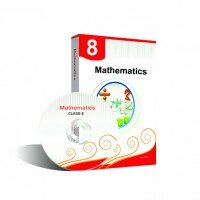Class 10 – Chemistry
₹199.00
Availability: In Stock
CLASS 10 – CHEMISTRY with following topics explained in details: Unit 1. Rate of Chemical Reaction and Chemical Equilibrium Unit 2. Study of Acids Bases and Salts Unit 3. Metals and Non Metals Unit 4. Carbon and its Compounds Unit 5. The Periodic Table of Elements
Product Description
CLASS 10 – CHEMISTRY
Unit 1. Rate of Chemical Reaction and Chemical Equilibrium
Introduction, Chemical Reactions, Chemical Equation, Unbalanced and balanced Equation, Balancing of chemical Equation, Rate of Reactions, Fast and Slow Reactions, Factors Affecting Rate of Reaction, Reversible Reaction, Irreversible Reaction, Chemical Equilibrium, Static Equilibrium and Dynamic Equilibrium, Law of Chemical Equilibrium and Equilibrium Constant, Le Chateliers Principle, Factors affecting rate of Reversible Reaction, Types of chemical reactions, Combination or Synthesis Reaction, Decomposition Reaction, Displacement Reaction, Double Displacement Reaction, Isomerization or Rearrangement Reaction, Classical concept of Oxidation and Reduction, Dissociation of electrolytes, Summary
Unit 2. Study of Acids Bases and Salts
Introduction, Acids, Classification of Acids, Preparation of acids, Properties of Acids, Bases, Classification of Bases, Preparation of bases, Properties of Bases, The pH Scale, Importance of pH in our daily life, Indicators, Salts, Classification of Salts, pH of salt, Preparation of Salts, Properties of Salts, Neutralisation, Uses of Acids and Bases, Chemicals from common salt, Sodium hydroxide, Bleaching powder, Washing soda, Baking soda, Plaaster of paris, Summary
Unit 3. Metals and Non Metals
Introduciton, Metals, Corrosion, Metallurgy, Aluminium, Compounds and alloys of Metals, Alloys of Aluminium, Alloys of Copper, Alloys of Iron, Non metals, Bonding between Metals and Non Metals, Properties of Ionic Compounds, Hydrogen, Uses of Hydrogen, Ammonia, Sulphur dioxide, Sulphuric acid, Comparison of Metals and Non Metals, Summary
Unit 4. Carbon and its Compounds
Introduction, The covalent bond, Tetravalency in Carbon, Allotropes of Carbon, Organic Compounds, Reasons for the existence of large no of Organic Compounds, Hydrocarbons and their classification, Homologous series, Nomenclature of Organic Compounds, Isomers and isomerism, Chemical properties of Carbon Compounds, Compounds with Functional Groups Containing Oxygen, Alcohols, Ethanol, Methanol, Propanone, Carboxylic Acids, Synthetic Polymers, Soap and Detergents, Summary
Unit 5. The Periodic Table of Elements
Introduction, Definition of periodic table, Classification of Elements, Mendeleyev’s Periodic Table, Modern Periodic Table, Periodicity and causes of Periodicity, Magnetic numbers, Organization of Modern Periodic Table, Relation of Periodic Table and Electronic Configuration, Diagonal Relationship, General Characterestics of Periods, Merits of long form of Periodic Table, Periodic Properties, Valency, Atomic Volume, Atomic Size, Ionization Potential, Electron Affinity, Electronegativity, Metallic and nonmetallic Character, Group I A Elements, Physical properties of Alkalimetals, Chemical properties of Alkalimetals, Group VII A Elements, Physical properties of Halogens, Chemical properties of Halogens, Summary
Only logged in customers who have purchased this product may leave a review.







Reviews
There are no reviews yet.